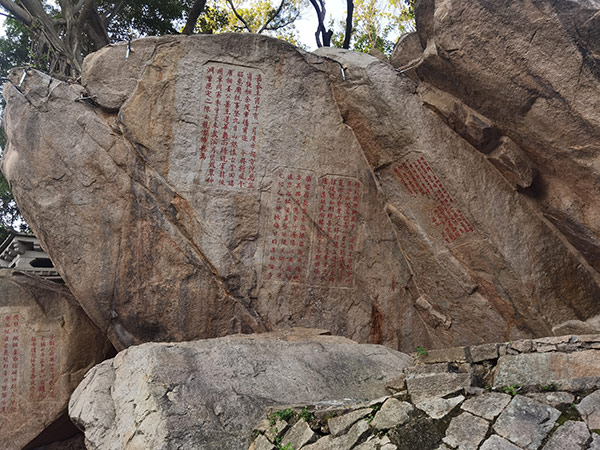A sea of possibility

Jiuri Mountain Wind-Praying Inscriptions. [Photo by Wang Kaihao/China Daily]
The prayers on the summit survive and can be seen in the 10 red cliff inscriptions, dating from 1174 to 1266. Many more inscriptions are believed to once have existed.
As shown by ancient documents, local governors of the Song Dynasty would lead a group of officials and members of the royal clan to make sacrificial offerings to a temple on the mountain every summer and winter. They wanted the monsoon to take the ships to their destinations safe and sound.
The Jiuri Mountain Wind-Praying Inscriptions is one of the 22 components of "Quanzhou: Emporium of the World in Song-Yuan China", which was inscribed onto the World Heritage List on Sunday during the ongoing 44th Session of the World Heritage Committee, hosted in Fuzhou, capital of Fujian province.
In the eyes of scholars, these precious stone inscriptions are not just a historical archive providing a reliable meteorological record.
"They also reflect the state power and a national-level system of the Song Dynasty to promote, manage and control maritime trade," says Fu Jing, deputy director at the Institute of Architectural History affiliated to the China Architecture Design and Research Group.




